Life Gambit à la Benko
By Diana Mihajlova
In part one we saw how in 1952 an ill-conceived attempt to escape from Hungary to the USA Pal Benko's "dark years" began – years spent imprisoned in a concentration camp, with not contact to friends or family. Release came only with Stalin's death in Russia, after which he was still denied participation at international tournaments – until he was deemed to have "learned his lesson". He prepared his second attempt to escape more carefully, and in 1957, during the World Student Championship in Reykjavik, Pal Benko defected to the USA.
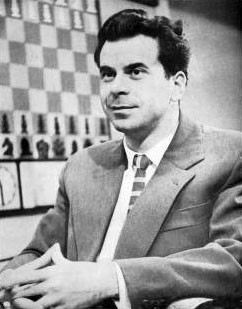 It was not a smooth beginning, but there was no turning back. His friendly and communicative disposition coupled with perseverance and intelligent moves helped his survival in the foreign land. Chess was his first point of call, but he soon realised that he could not rely on handouts from the American Chess Federation, who had not even funds to send a team to the Chess Olympiad! He had to rely on his own wits. In the turbulent years back in Hungary he had managed to find a way to study at the Budapest University of Economics, and although it was “communist economics”, it still came handy. Thanks to his mathematical and logical mind, a chance employment in Fleet Street and a few cleverly brokered deals helped him stand on his own feet within a couple of years and acquire his own living accommodation. More importantly, it helped him to ‘buy’ freedom to dedicate time to his chess pursuits. He made an unprecedented record of winning the US Open eight times, played on six US Olympic teams and in 14 US Championships. He qualified twice as a World Championship Candidate, in 1959 and 1962.
It was not a smooth beginning, but there was no turning back. His friendly and communicative disposition coupled with perseverance and intelligent moves helped his survival in the foreign land. Chess was his first point of call, but he soon realised that he could not rely on handouts from the American Chess Federation, who had not even funds to send a team to the Chess Olympiad! He had to rely on his own wits. In the turbulent years back in Hungary he had managed to find a way to study at the Budapest University of Economics, and although it was “communist economics”, it still came handy. Thanks to his mathematical and logical mind, a chance employment in Fleet Street and a few cleverly brokered deals helped him stand on his own feet within a couple of years and acquire his own living accommodation. More importantly, it helped him to ‘buy’ freedom to dedicate time to his chess pursuits. He made an unprecedented record of winning the US Open eight times, played on six US Olympic teams and in 14 US Championships. He qualified twice as a World Championship Candidate, in 1959 and 1962.
There could have been a third time if an event of historical importance had not taken place. In 1970, he gave up his earned spot at the World Championship Interzonal to Bobby Fischer. He still modestly refers to that event as the most logical gesture that he could make at the time. “My own chess career was nearing its end, while Fischer was very young, very strong and very ambitious. And I knew that he would do well and earn the right to compete for the world title”. Fischer did exactly that and in 1972 in the most dramatic battle in the chess history, he beat Spassky and became a World Champion. Curiously, this action by Benko is rarely referred to, yet without it chess history might not have been as we know it today.

They met in a chess club, when Fischer was a fourteen-year-old boy. Their relationship was complex, but very special and long lasting, with Benko assuming ‘a father figure’ role to his much younger chess pal.
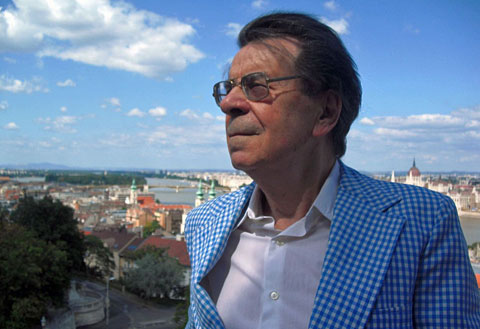
With America a far away past, it is a time of quiet reflections over
his rich life in the capital of his fatherland
Another example of his humanity is his generous coaching and training help to the young Polgar sisters. In the early stages of their career, when their parents’ finances were scarce, Benko took the girls under his wing and offered them training – for free. “I trained the Polgar sisters for two Olympiads and travelled with them as their coach – in Moscow and Novi Sad.” He keeps cordial connections with the Polgar family until today.
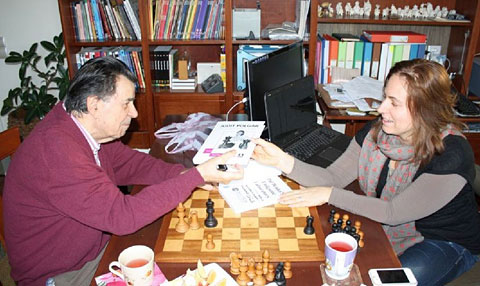
Pal Benko and Judit Polgar exchanging their latest books, at Judit’s home
His name will be always connected to the Benko Gambit. It came as a result of his utter dislike of opening preparations. “I remember being with a girlfriend who asked me to look over some chess openings with her. I instantly fell asleep. I found that I could always take a nap in any situation by just looking at some opening variation – my eyes would shut right away.” [From his biography].
He created the system, initially called “Benoni Counter Defense”, in order to avoid study of openings and as a surprise weapon against his opponents. He points out that Alekhine played only three games using the opening that bears his name, while Benko played hundreds of games and won almost as many, using his “Benko Gambit”.
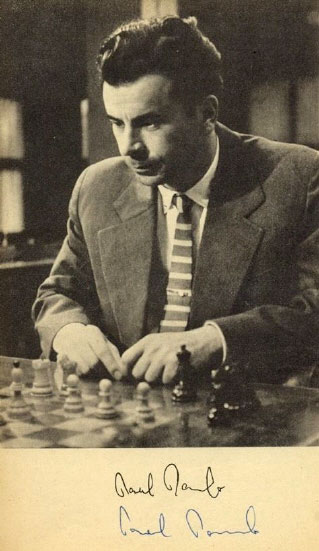 The Benko Gambit The Benko Gambit
1.d4 Nf6 2.c4 c5 3.d5 b5
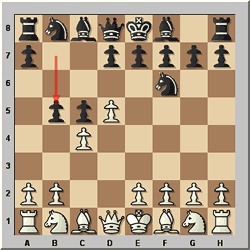
In The Benko Gambit by P. Benko (New York, 1973) the author wrote: ‘It is hardly possible to state precisely who first adopted the gambit. Some Swedish sources mention that it first occurred there in the 1920s and that tournaments especially for the gambit were organized later. The three internationally known masters of Sweden’s past – Ståhlberg, Stoltz and Lundin – also used it, although Ståhlberg found it not to his taste either as White or as Black. Indeed, the Swedish players appear to have used the king’s-side fianchetto, if not the modern order of moves. Of course, the gambit may have occurred elsewhere as well, but it was undoubtedly Lundin who introduced it into international tournament practice. Nevertheless, it later fell into oblivion.'
See Edward Winter's Unsolved Chess Mysteries (25)
for information on the origins of the Benko Gambit.
See also our ChessBase DVD Alejandro R amirez: Attacking with the Benko Gambit |
“Endgames, though, fascinated me. I wanted to dig deep for the ultimate truth, but truth doesn’t exist in the beginning phase of a game”. [From his biography]. Benkö is well known as an endgame theoretician. In April of this year, the US magazine "Chess Life" celebrated 45 years of his contributions of endgame theory.
Benko is openly critical of the current practice of computer interference in the creativity of the game, and the automatic use of computer opening preparations in modern chess. He favours a "randomised chess", mentioning that it was actually his original idea that Fischer later on developed into Fische Random Chess.

Explaining the randomised chess idea
He passionately demonstrated how it should be done: first, the board should be cleared of all major pieces, with only the pawns left. Then the pieces should be placed randomly and the game would start, without the "artificial knowledge" of opening theory. Creativity would take over.
Early agreed draws is another occurrence that he considers very bothersome and detrimental to the beauty and larger public acceptance of chess as a competitive game.
Benko is still looking for improvements in the game and he revealed to me his latest concern. He is very keen on bringing forward an interesting innovation, or rather, bringing back an old chess rule, where stalemate meant a victory for the side delivering it. To this effect he has made an official proposal to the FIDE via the Hungarian Chess Federation, suggesting the rule change be implemented.
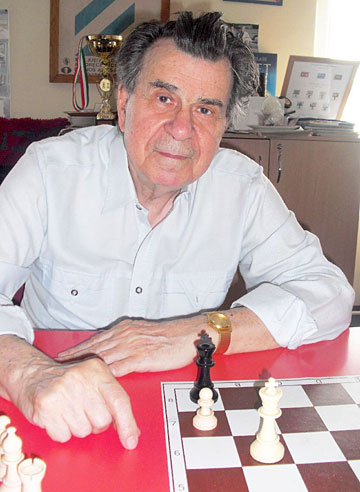
Benko demonstrating a possible game ending – white wins!
An indefatigable artist trusting only his own original creativity, Benko has shown expertise in many areas of chess. He has retired from a competitive chess, but his compositions of problems and puzzles, an area in which he excels, endure until today.
Happy Birthday, Pal Benko!

Pal Benko and Diana Mihajlova
Benko puzzles on ChessBase.com
Pal Benko is a noted authority on the chess endgame and a composer of endgame studies and chess problems. He is also a dear friend who keeps in touch with us regularly, sending problems and puzzles for the ChessBase news page on special occasions (you will find examples here, here and here). For the Easter holidays in 2011 he sent us some puzzles, which he had shown to a World Champions. Bobby Fischer had lost bets on all them – i.e. he was not able to solve them in a specific period of time, or was not able to solve them at all. Here are two (of four) examples.
Easter Puzzle 2011

Mate in three moves
At the Lugano Olimpiad in 1968 Bobby Fischer could not solve it in half an hour and lost a bet he had made with Pal. In fact he lost a second bet, because he said that the problem must have two solutions. "I told him that was impossible," says Pal, "since I composed it when I was already fifteen years old. The next day he paid up again. I joked that it had been so hard for him because he never played the Italian Opening [hint!]."
Easter Puzzle 2011

Helpmate in three
In a helpmate Black moves first and cooperates with White to construct a position in which Black is mated in the specified number of moves. "Bobby liked helpmates," Pal says, "so he asked me to show them to him many times. For the above problem I gave him half an hour, but he was not able to do it. Also Botvinnik, Keres and Geller could not solve it at Wijk aan Zee 1969, before we were thrown out of the restaurant :-)" (yes, the octogenarian uses smileys!). "Botvinnik was quite a good solver, but he did not like helpmates. Only Reshevsky was able to solve it in about half hour."
Have fun trying to solve the above puzzles. We will provide the solutions here next week.
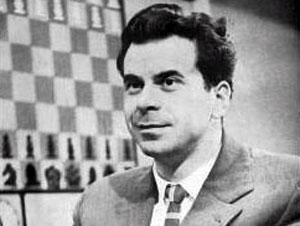

















 It was not a smooth beginning, but there was no turning back. His friendly and communicative disposition coupled with perseverance and intelligent moves helped his survival in the foreign land. Chess was his first point of call, but he soon realised that he could not rely on handouts from the American Chess Federation, who had not even funds to send a team to the Chess Olympiad! He had to rely on his own wits. In the turbulent years back in Hungary he had managed to find a way to study at the Budapest University of Economics, and although it was “communist economics”, it still came handy. Thanks to his mathematical and logical mind, a chance employment in Fleet Street and a few cleverly brokered deals helped him stand on his own feet within a couple of years and acquire his own living accommodation. More importantly, it helped him to ‘buy’ freedom to dedicate time to his chess pursuits. He made an unprecedented record of winning the US Open eight times, played on six US Olympic teams and in 14 US Championships. He qualified twice as a World Championship Candidate, in 1959 and 1962.
It was not a smooth beginning, but there was no turning back. His friendly and communicative disposition coupled with perseverance and intelligent moves helped his survival in the foreign land. Chess was his first point of call, but he soon realised that he could not rely on handouts from the American Chess Federation, who had not even funds to send a team to the Chess Olympiad! He had to rely on his own wits. In the turbulent years back in Hungary he had managed to find a way to study at the Budapest University of Economics, and although it was “communist economics”, it still came handy. Thanks to his mathematical and logical mind, a chance employment in Fleet Street and a few cleverly brokered deals helped him stand on his own feet within a couple of years and acquire his own living accommodation. More importantly, it helped him to ‘buy’ freedom to dedicate time to his chess pursuits. He made an unprecedented record of winning the US Open eight times, played on six US Olympic teams and in 14 US Championships. He qualified twice as a World Championship Candidate, in 1959 and 1962.


 The Benko Gambit
The Benko Gambit










